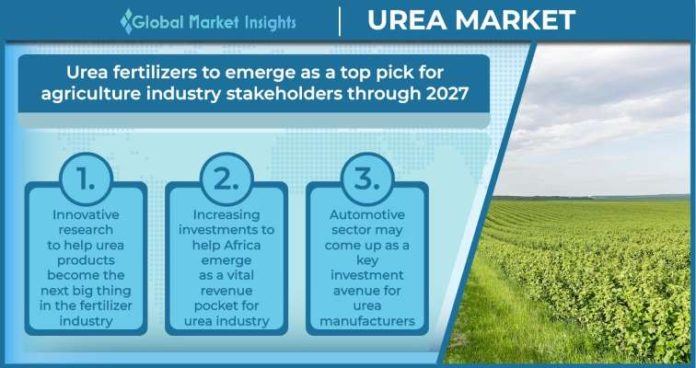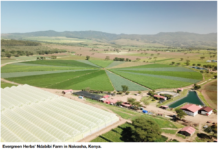The global urea market is all set to observe an upward trend in the 21st century as the demand for organic fertilizers rises appreciably.
Citing an instance, in July 2022, SABIC Agri-Nutrients Company and BiOWiSH Technologies, Inc. signed a collaboration on the development of Bio-enhanced mineral fertilizers coated with urea. Dubbed BiOWiSH Crop Liquid, the product creates a high-performance connection between the BiOWiSH microorganisms and plants. The use of this fertilizer was successfully evaluated in nine countries across five continents and nine various crop types. The market launch of the SABIC AN Enhanced Urea will initially be fulfilled via SABIC AN partner in select countries while further tapping into other regions.
Such instances mark initial steps toward making the urea market a significant sector in the bulk and specialty chemicals industry. According to a recent report by Global Market Insights Inc., the overall urea industry is set to grow at an unprecedented pace through 2027.
An analysis of the Africa urea market
The African continent is currently witnessing severe food insecurity. As per an FAO report, nearly 346 million people in Africa are affected by the food crisis. Crop production in Africa is between 58% to 70% below average levels. Limited access to healthy diet and medical care has led to increasing malnutrition rates. A majority of the nations are still reeling from the aftereffects of the pandemic. This has led to an urgency among country leaders to scale agricultural productivity – one of the primary steps undertaken in this regard is to increase the use of up-and-coming synthetic products such as urea fertilizers.
Recently, IFC- a World Bank Group member- announced a new USD 1 billion debt funding for Indorama Eleme Fertilizer and Chemicals Ltd, Nigeria. The project is expected to lead to the construction of a new fertilizer line that will expand its capacity of urea fertilizers to more than 2.8 million tons. This will also enable Nigeria to become a major hotspot for urea exports. Besides, through this capital, IFC seeks to expand its ability to provide competitively priced and superior quality fertilizers to farmers in West Africa and worldwide.
This initiative points to the growing urea market landscape across Africa. Nigeria, in fact, currently holds the position of third-largest producer of urea worldwide. The need to eliminate food scarcity and the subsequently increasing private and public sector investments will ensure that Africa emerges as a vital revenue pocket for the urea market in the forthcoming years.
Future of the urea market
While the agricultural sector is projected to remain as a primary vertical for urea industry, the automotive segment may also emerge as a key investment avenue for market players. Urea is used in various diesel-powered vehicle models as a post-combustion emission suppressant. The product converts a majority of the nitrogen oxide component in the gases to harmless nitrogen and water. Today, several automakers are claiming NOx conversion rates of 80 percent or more using urea in diesel vehicles. These reductions may add significantly to the cost of driving a diesel vehicle, however, will have a positive impact on environment.
Innovative research to help urea products become the next big thing in the fertilizer industry
While urea plays an important role in agriculture, its production contributes largely to GHG emissions. GHGE from urea manufacturing is generally composed of carbon dioxide and has two components. The first is made of emissions at the factory of production, equating to 1.9 kilograms of CO2 per kg of Nitrogen. Meanwhile, the second component comes from the release of carbon dioxide from urea when applied to crops, which amounts to 1.59 kilograms of CO2 per kg of urea nitrogen. The growing GHG emission from urea production is currently a major contributor to climate change.
To this end, new research studies on sustainable ways of producing urea fertilizers without harming the ecology are being conducted. One such study that highlighted the production of urea fertilizers with reduced environmental impact was undertaken in 2019, by scientists at the University of Sheffield’s Institute for Sustainable Food and Energy Institute. The research unearthed a way to manufacture urea that lowers carbon emission by nearly 21%.
Blue Urea- the newly found urea fertilizer- is anticipated to enable cost savings as there is no need to transport the urea to long distances. It also supports energy saving because drying and pelletization are no longer required in the process. Consistent R&D projects will, in the future, play a key role in bringing urea fertilizers to the forefront of agricultural practices.









